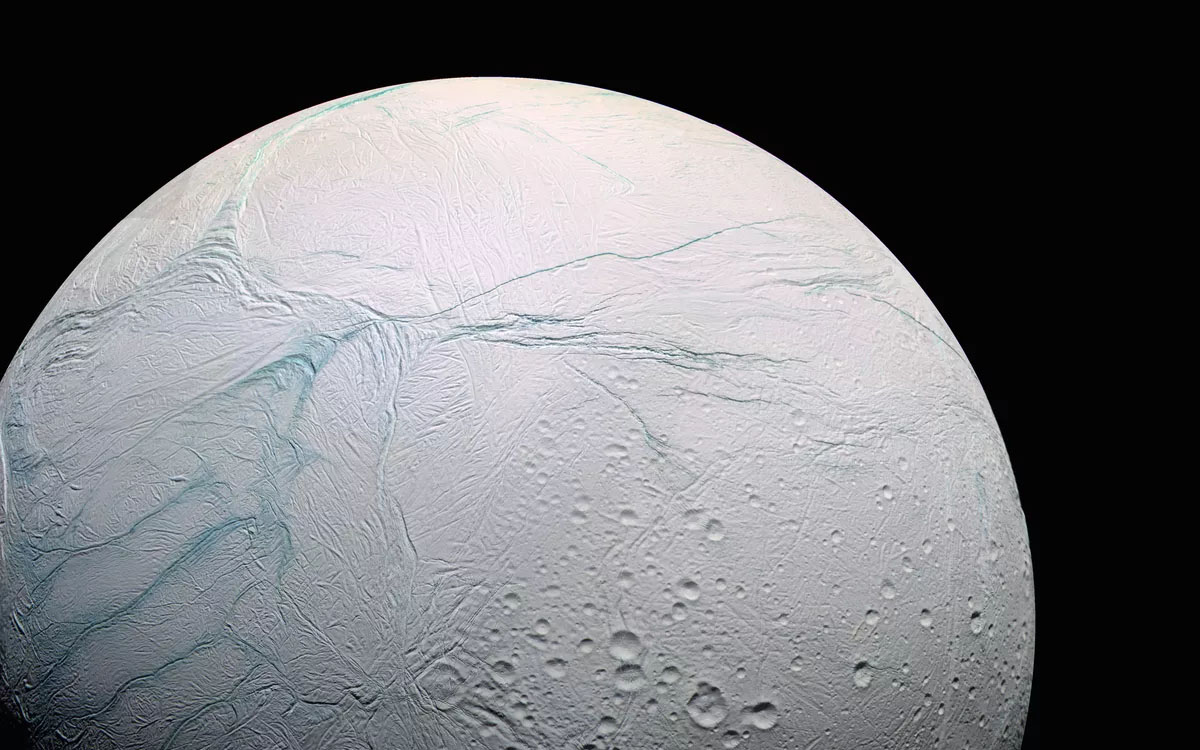why we’re one step closer to finding alien life

We’ve known for a while that Saturn’s moon Enceladus should have a huge ocean under all the thick surface ice thanks to the plumes of water it regularly ejects into space. These jets couldn’t have come from melting ice because they were salty, the kind of salty only possible with ocean water being heated by active geology. Given the amount of work that went into analyzing them, yesterday’s official confirmation from NASA, which looked at the moon’s wobble and found clear and obvious signs of a global ocean, was actually kind of expected. Enceladus’ wobble is simply too significant for a world made entirely of ice and rock, and requires a massive volume of liquid water to explain. Locked under 19 to 25 miles of ice, this ocean is estimated to be 6 miles deep and has a volume of approximately 8 million cubic kilometers. It’s less than a hundredth of what we have there on Earth, but Enceladus is 25 times smaller, so relative it its size, that is a huge amount of liquid, salty, real estate for life to flourish. And not just life, but life as we know it.
That’s actually the real reason to get excited about going alien hunting on Enceladus. Normally, when talking about living things in the outer solar system, we need to start considering all sorts of exotic chemistry we don’t yet fully understand. This means finding life on say, Titan, could be a much more ambiguous endeavor and there will always be room to doubt what we discovered due to some quirk of the local environment. Enceladus, on the other hand, has oceans warmed by tidal churn, much like Europa, and with extremely strong hints of hydrothermal activity not at all dissimilar from the bottom of the oceans right here at home. The same chemistry that made life on Earth possible is more than likely taking place under the moon’s ice shell. When we start diving into its ocean, we could very well encounter organisms we’d instantly recognize as living beings; alien arthropods, worms, and plants converting volcanic gases into rich nutrients.
When next month’s close fly-by by Cassini happens, we will get much better close-up images of the ice shell, but I wouldn’t expect anything too groundbreaking. At this point, with the evidence at hand, we should start dusting off the plans to explore this frozen ocean, although melting the many miles of ice on Enceladus would be much, much harder than the alternative of finding the rifts in Europa’s ice sheets and scurrying to dive in. It would be a difficult mission because there are pretty much no shortcuts to the nuclear-powered drills and heaters required for Enceladus. Even trying to break up the ice with kinetic impacts from orbit wouldn’t really do much because at -292° F, the ice is more like rock than just frozen water, and the impactors would just bounce off after a glancing blow. So when the time finally comes to dive into the dark, hidden oceans of the outer solar system’s moons, expect Europa to be first on the list thanks to its proximity, and the dynamics of its ice sheets. After that, however, Enceladus is bound to be the next stop…





